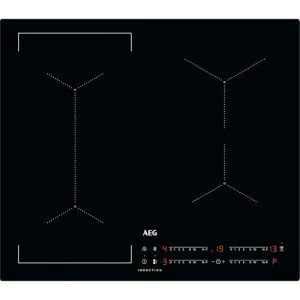Induction Hob Guide: A Comprehensive Overview
Induction hobs have emerged as a popular option for modern kitchen areas, reinventing the method individuals cook. visit this backlink will supply an in-depth take a look at what induction hobs are, how they work, their advantages and disadvantages, and factors to consider when acquiring one.
What is an Induction Hob?
An induction hob is a kind of cooktop that uses electro-magnetic energy to heat pots and pans straight, instead of cooking through a flame or by warming the surface area of the cooktop. This innovation is becoming progressively popular within both residential and commercial kitchens due to its efficiency and safety features.
How Does an Induction Hob Work?
The concept behind induction cooking relies on electro-magnetic induction. Here's how it works:
- Electromagnetic Field: When the induction hob is turned on, it creates a magnetic field below the cooktop surface.
- Material Response: If a ferrous (magnetic) product pot or pan is put on the hob, the electromagnetic field causes currents in the pots and pans.
- Heat Generation: These caused currents produce heat straight in the pot or pan, preparing the food within. The hob surface stays cool to the touch considering that it is not being heated up straight.
Advantages of Using an Induction Hob
Induction hobs include a wide variety of benefits:
- Energy Efficiency: Induction cooking is extremely efficient as nearly all the energy produced is transferred straight to the pot or pan, resulting in quicker cooking times.
- Safety: The surface area of the induction hob stays cooler, lowering the risk of burns. Additionally, induction hobs switch off instantly when pots and pans is gotten rid of.
- Precise Temperature Control: Users can easily adjust the heat settings, offering better control over cooking temperature levels.
- Easy to Clean: Because the induction hob itself does not get exceedingly hot, spills are less likely to burn onto the surface, making cleaning up a breeze.
- Modern Aesthetics: Induction hobs generally can be found in sleek, flat styles that fit well in modern cooking areas, improving the overall visual.
Downsides of Induction Hobs
While there are many advantages, it is also important to consider some drawbacks:
- Cost: Induction hobs are typically more pricey than standard gas or electrical cooktops.
- Pots and pans Compatibility: Specialized pots and pans is essential; only ferrous pots and pans will deal with induction hobs, meaning some pots and pans might need to be changed.
- Noise: Some users report a buzzing or humming sound when using induction cooking, particularly at high settings.
- Power Limitations: Induction hobs may require specific electrical setups and can not be utilized with basic outlets if they have high power requirements.
Key Features to Consider When Buying an Induction Hob
When thinking about buying an induction hob, it's important to examine numerous factors to guarantee you make the best option for your kitchen area.
| Function | Description |
|---|---|
| Size | Select a model that fits your kitchen space and satisfies cooking needs (2-5 burners). |
| Power Output | Try to find greater wattage for quicker heating but make sure compatibility with your power supply. |
| Control Type | Choose in between touch controls or knobs, based on your choice for ease of use. |
| Safety Features | Check for automated shut-off, child locks, and recurring heat indications. |
| Style | Pick a style that complements your kitchen design-- think about an integrated versus a counter top. |
| Warranty | Confirm the warranty used-- longer warranties recommend better product guarantee. |
FAQ
Can I utilize any pot or pan on an induction hob?
No, only pots and pans made from ferrous metals, such as cast iron or some stainless-steel, will deal with induction hobs. Aluminum, glass, and copper cookware are not suitable unless they have a magnetic base.
How does induction cooking affect cooking times?
Induction cooking is generally faster than gas or electrical cooking, as it straight heats up the pots and pans and not the cooktop. A lot of users report substantial time cost savings when boiling water or cooking meals.
Is induction cooking safe for children?
Yes, induction hobs are thought about safe for children. The primary surface remains cool, and the hob instantly turns off when pots and pans is removed, minimizing the risk of burns or fire.
Do induction hobs need special electrical installations?
Some induction hobs may need a dedicated electric outlet in order to operate appropriately, particularly those with higher power output. It is vital to seek advice from an electrician if you are not sure.
Induction hobs represent a substantial development in cooking innovation, providing effectiveness, speed, and security advantages over standard cooking techniques. While there are considerations to keep in mind, such as expense and pots and pans compatibility, the benefits can exceed the disadvantages for lots of users. As home cooking continues to evolve, induction hobs make certain to be at the forefront of modern cooking technology.
Whether you are a culinary novice or a knowledgeable chef, understanding how induction hobs work and what to try to find when buying one can significantly boost your cooking experience. By weighing the advantages against the downsides and considering your specific needs, you can make a notified decision that will raise your cooking to new heights.

